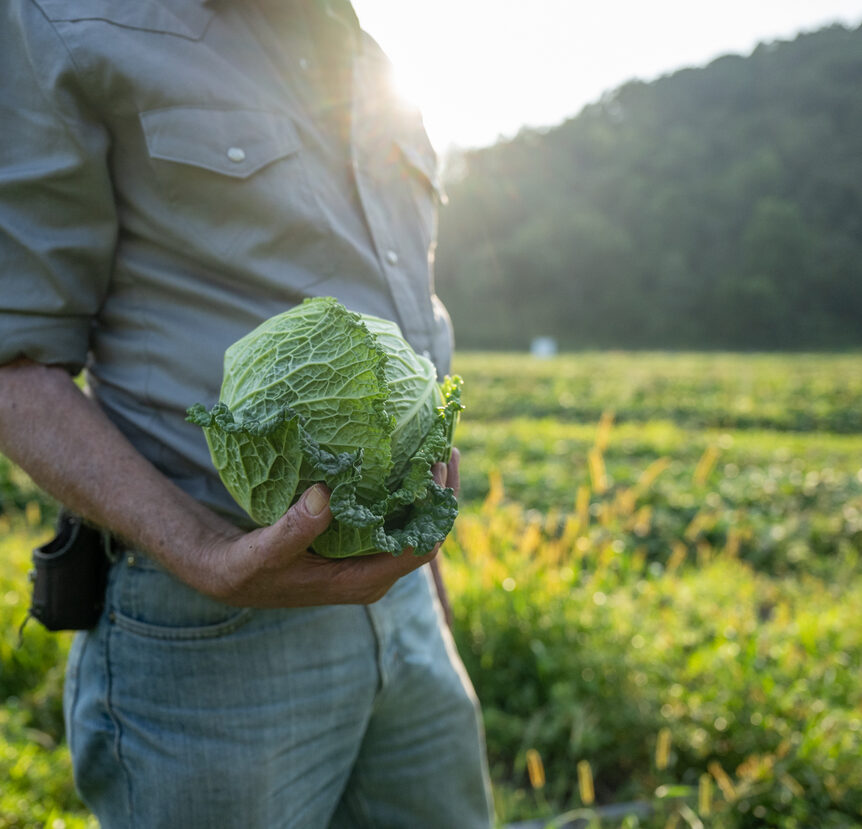This is the third post in a series of six for market gardeners. If you missed them, check out the first and second posts here.
Our soils have been so degraded by decades of misuse that their native microbes are in a deplorable state. In order to jumpstart the process of regeneration, we must regenerate microbial communities, which generally means we need to add biology to our market gardens. You can certainly wait for biology to come back on its own, but it will be much faster to add biology. There are 3 main ways to add biology: high-quality compost, compost teas, and purchased microbial inoculants.
High-Quality Compost
By “high-quality,” I mean compost that has very high numbers of microbial species. Two types of compost especially shine in this regard: vermicompost and Johnson-Su. Both are appropriate and easy to use at small scale. I have seen unpublished research showing that Johnson-Su compost outperforms all other types of compost at producing changes in the soil biological profile in the field. For whatever reason, these changes don’t show up in laboratory settings, but that’s fine, because the field is where we are working.
Compost Teas
Another great way to add biology to a market garden is in compost teas. This is another solution that is appropriate for the small scale of market gardens. I won’t go into detail on how to make compost teas here, but I will issue a word of caution: the microbial profile of the compost changes as it brews–some species thrive in the aquatic tea environment while others do not. The conscientious grower would test their compost tea to make sure the species composition is appropriate and helpful for their farm.
Purchased Microbial Inoculants
If we want to reach our goal of thriving soil biology as quickly as possible, compost and compost teas are not sufficient. They are useful tools, and very powerful, but they don’t contain the full range of biology needed for thriving soil ecosystems. Many species of beneficial microbes require living plant roots to propagate–mycorrhizal fungi are a good example. These species simply won’t be found in vermicompost or any other compost that doesn’t have living plants in it. Of course, they’ll return to our farms over time, but if we really want to speed up the regenerative process, it can be helpful (necessary even) to use purchased inoculants to introduce these species to our farms.
One great tool is a mycorrhizal seed treatment like AEA’s BioCoat Gold™. This is a very inexpensive way to add mycorrhizae right to the seed so they are present at the moment of the roots’ emergence and can begin forming their symbiotic relationships immediately.
Avoid Nutrient Excesses
One caveat about compost is that it’s important to avoid adding lots of manure-based compost. We have found that the majority of insect and disease problems, including flea beetles and aphids, are the result of nutrient excesses rather than nutrient deficiencies. The most commonly excessive nutrients are Nitrogen, Phosphorus, and Potassium, which happen to be particularly concentrated in animal manures. When you consider the large quantities of compost used in most market gardens, using high-NPK manure-based compost is a recipe for disaster.
On the other hand, when we use plant-based compost, it is very difficult to develop excessive levels of NPK in our crops.
Once we’ve added microbes to our soil, they will be very hungry, and will need a constant food source. Check out the next post for details on how to feed your soil biology.
Don't miss John Kempf's next post about market gardening. Subscribe.
You'll get each post to your inbox (~1x/week).
You may unsubscribe at any time. We value your personal information. Here's our Privacy Policy.
"*" indicates required fields


